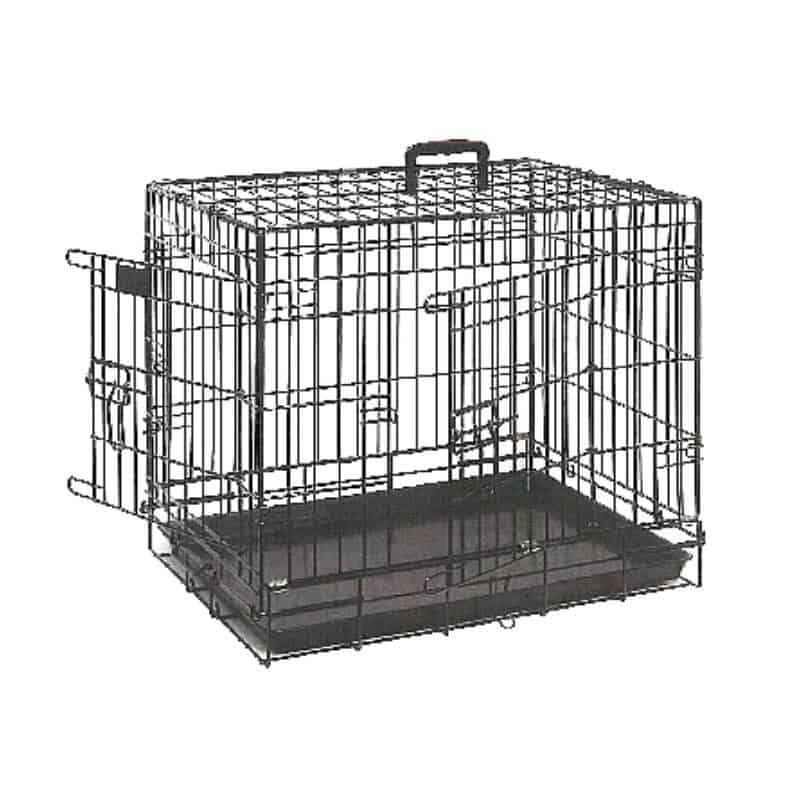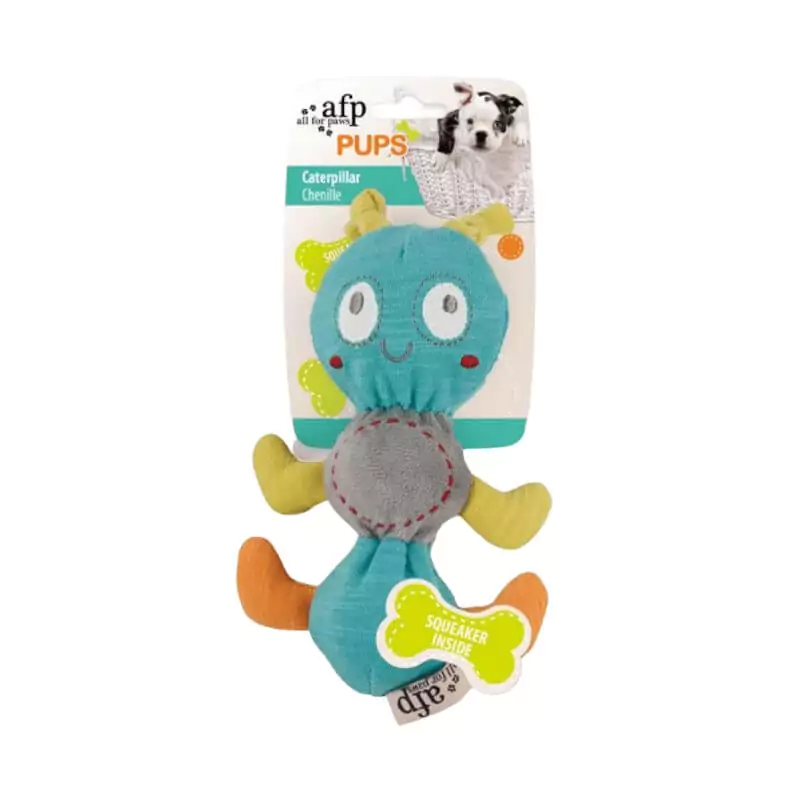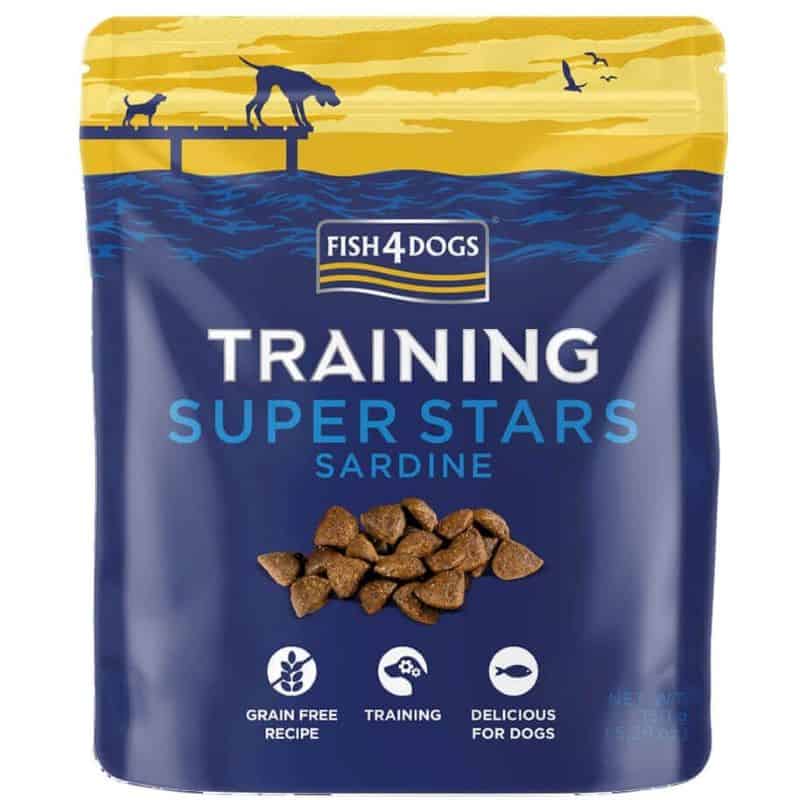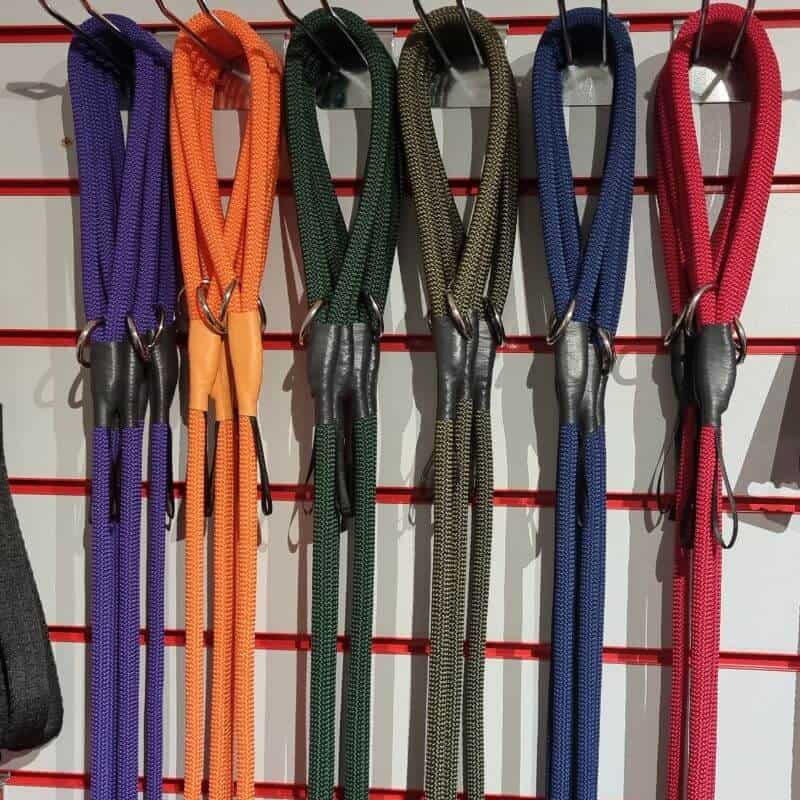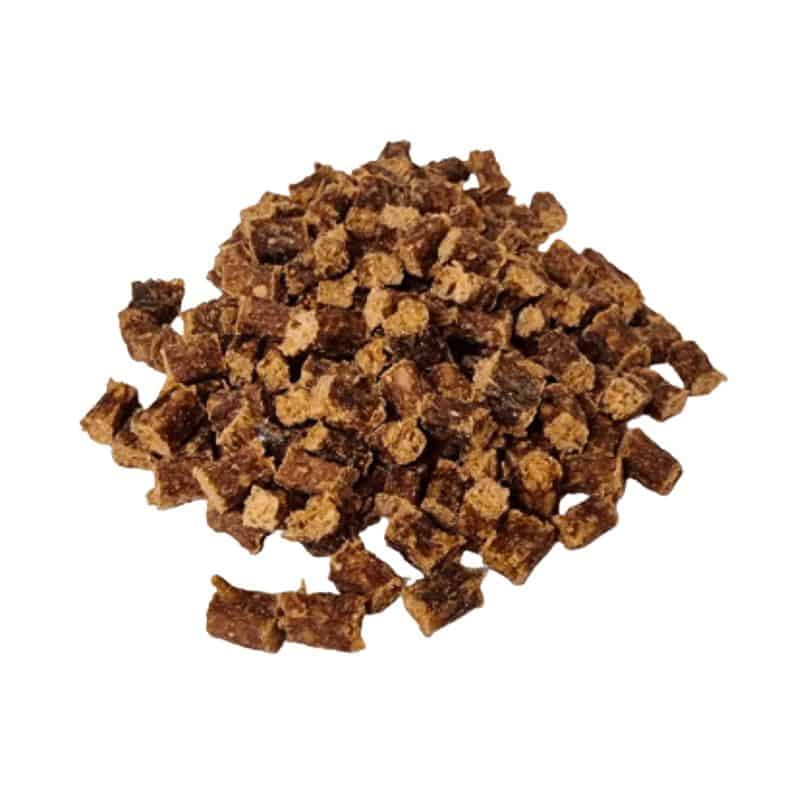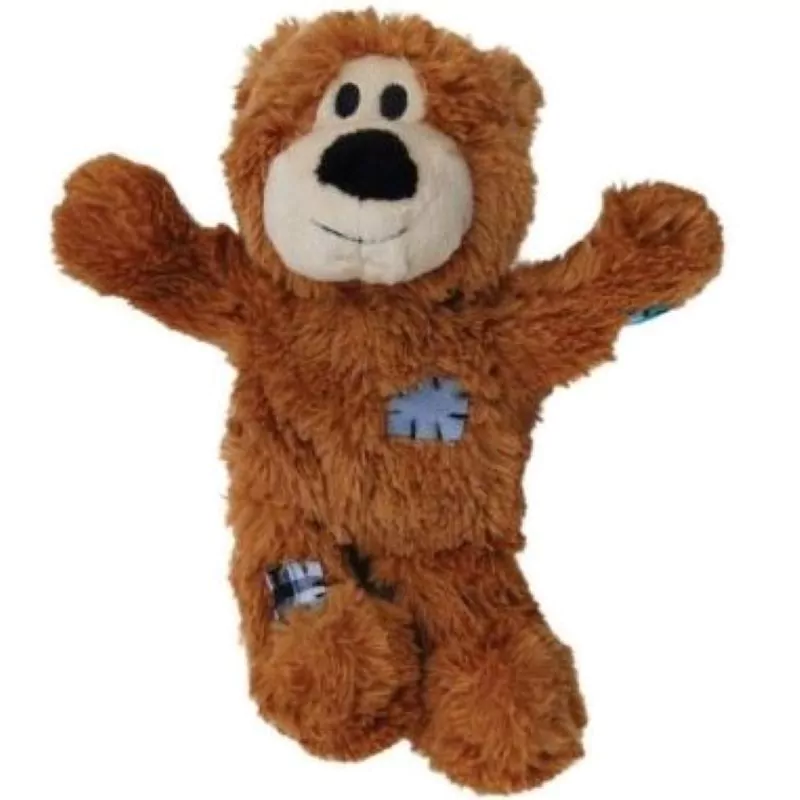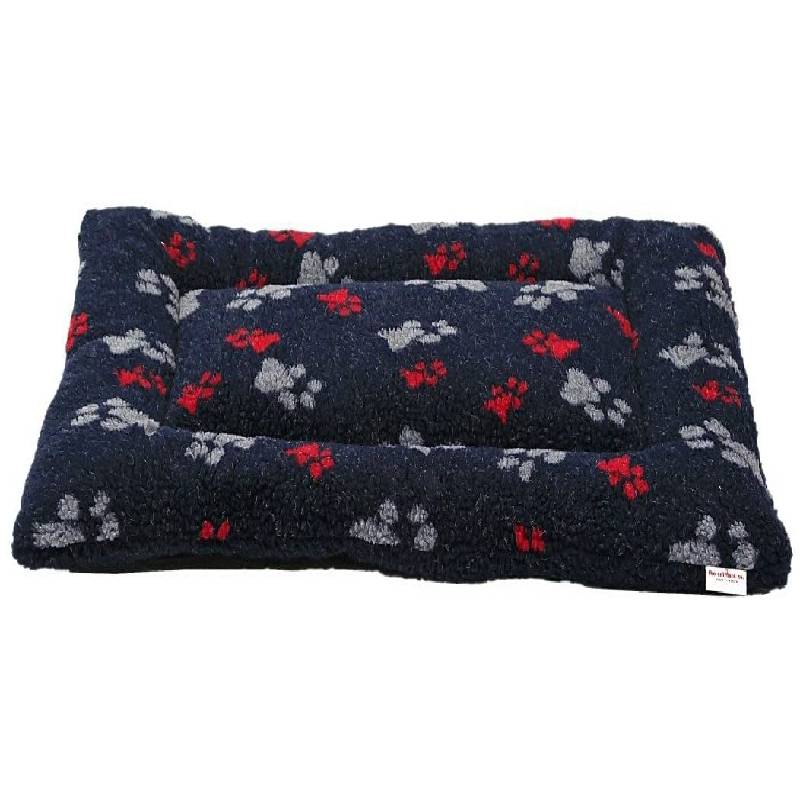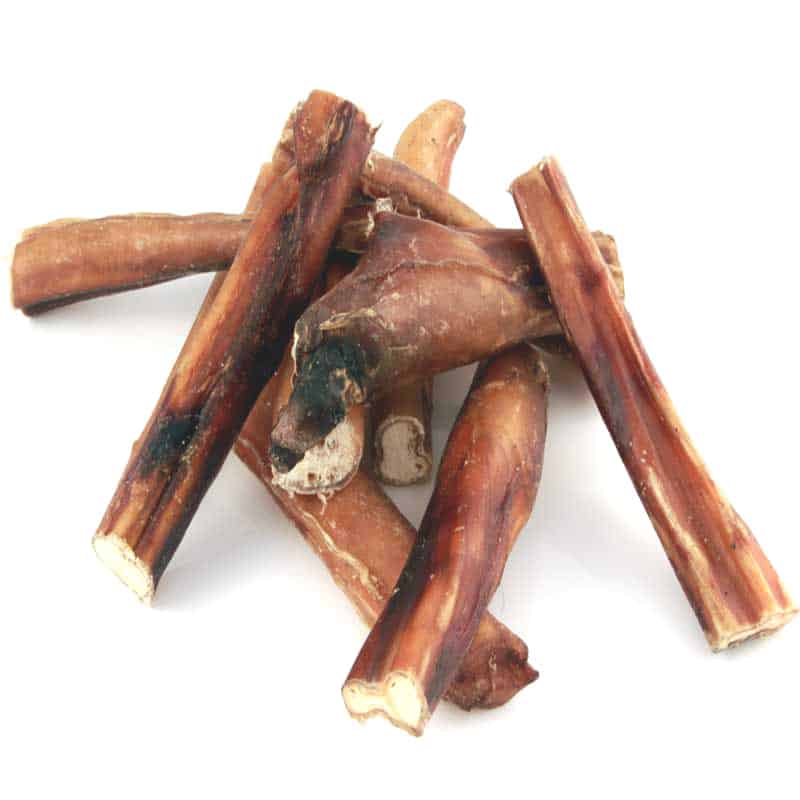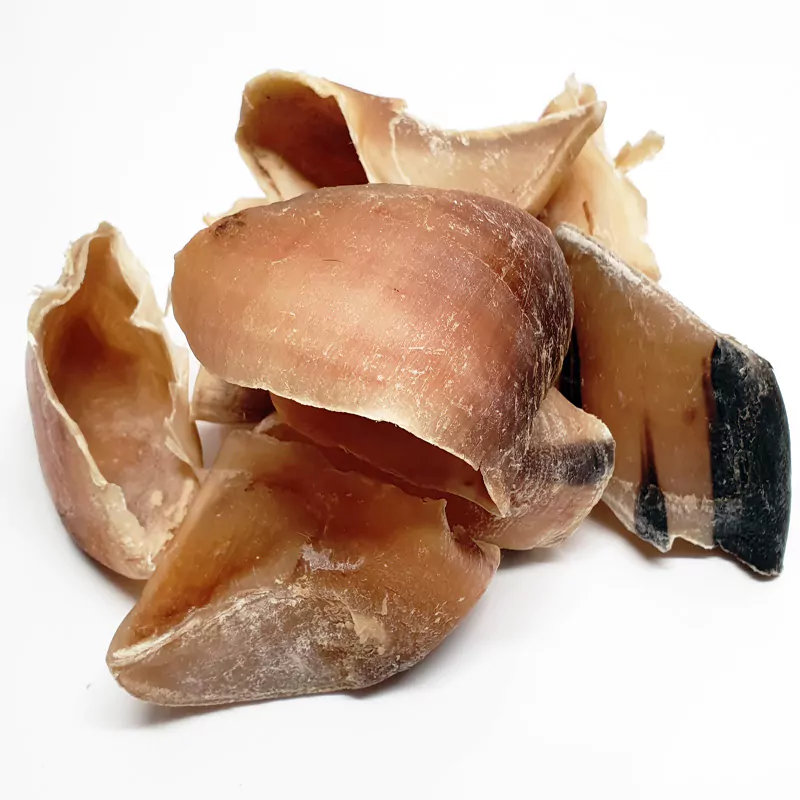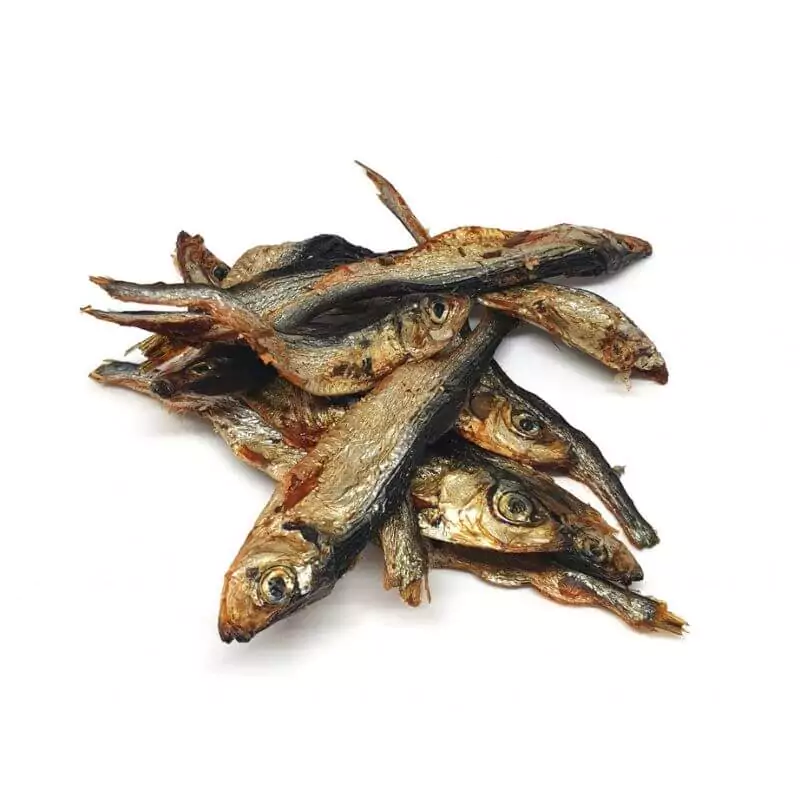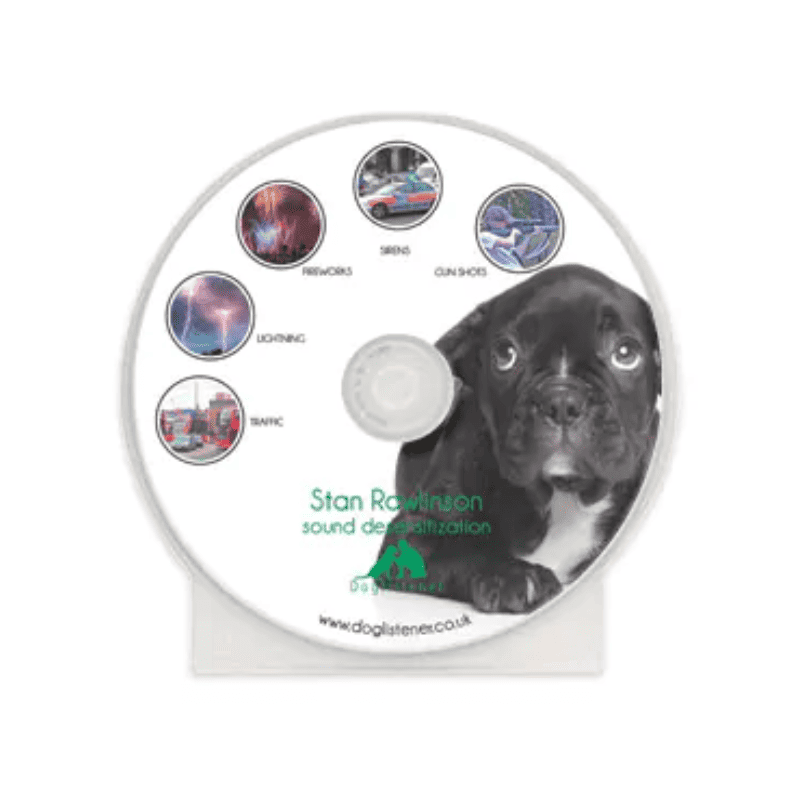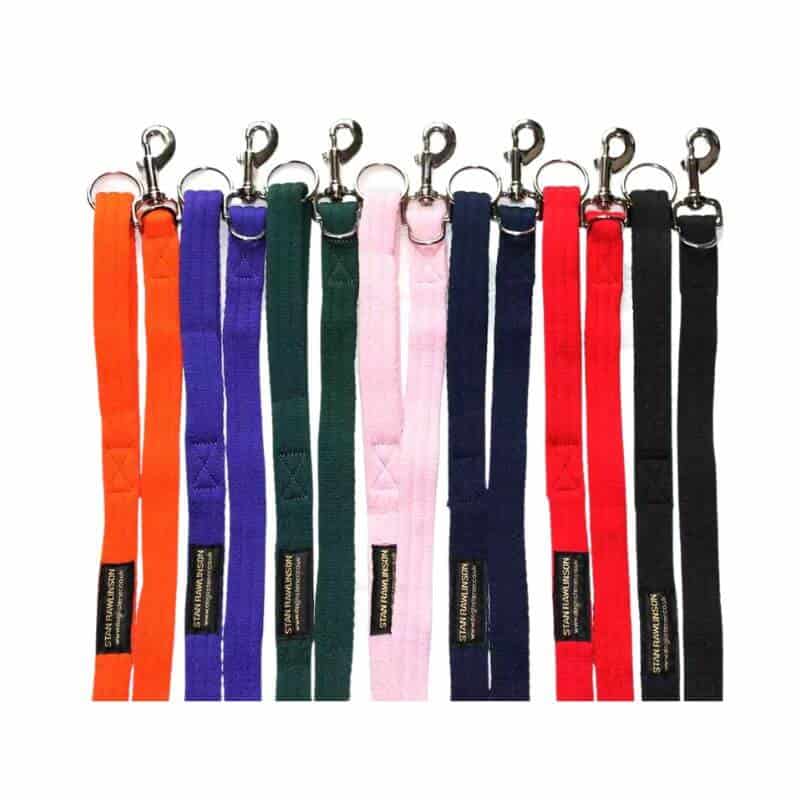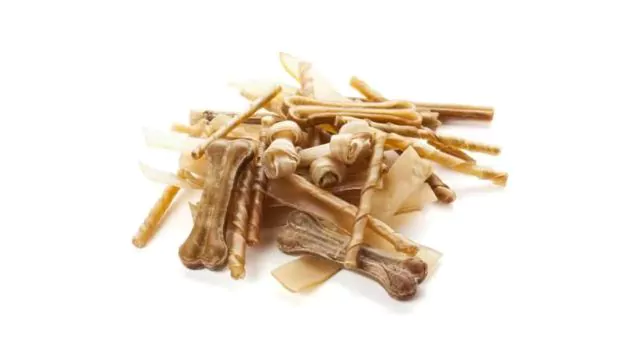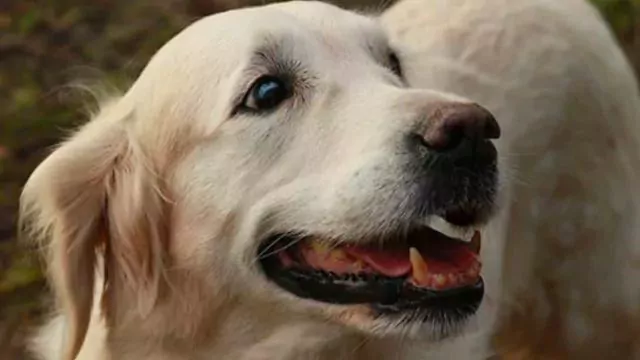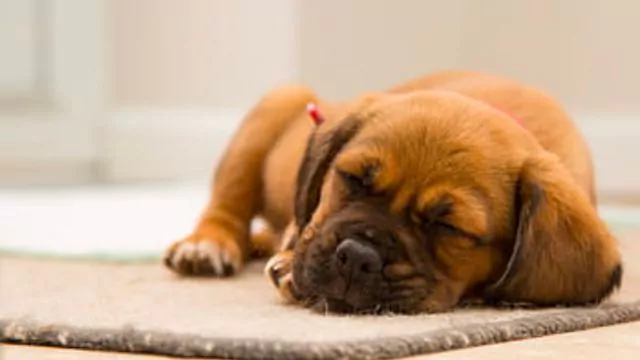Training Your Dog and Puppy to Toilet Outdoors
Stan Rawlinson a professional dog behaviourist and trainer explains Toilet Training training your dog or puppy to toilet outdoors using a crate.
Toilet Training With A Puppy or Adult Dog
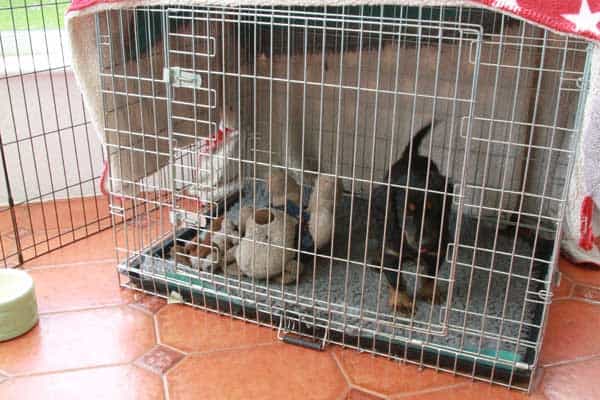
As a kennel or carrier you see them at airports because they are approved for flight They are either plastic with wire windows, or are all wire.
The wire type can be collapsed down and transported quite easily, therefore, the wire style is my personal choice.
They come in various sizes to fit all dogs (even Irish Wolfhounds) the tallest dog in the World.
They should never be used for punishment, dogs should see the crate as a den and a haven and feel secure and safe, never frightened.
Do You Need a Crate: I believe they are almost a necessity in this day and age. If your dog lived in the woods it would seek out a den where it could sleep and be secure, free from predators and interference. Think of a crate as a portable den.
Your dog will think of the crate as its haven. Especially in times of stress, fear or tiredness. It is also great for just time out when your pup will seek out his den to settle in for a bit of peace and quiet. This is especially the case when you have young children.
Crate training aids toilet training, speeding up the learning process enormously. But that is not the main reason to always crate train dogs and puppies. There are four other reasons for crate training dogs that are just as important. Imagine your dog breaks a bone or has hip or cruciate ligament problems, or is just ill or injured.
The first thing that will happen is your Vet will put it in a crate. If it has never been crate trained, that will intensify the stress and trauma. Many injuries and accidents require crate rest. How will the dog feel if it has never been initially trained to accept a crate?
1. If you go away you can take a secure crate/den to keep him in.
2. If your dog is injured or needs an operation, the first thing a Vet will do is put him in a crate, If he has never been crate trained that will be really traumatic.
3. If your dog breaks a leg or has cruciate ligament or hip problems he will need a secure place to stay in a crate to stop the dog from moving about further injuring the affected area. Most dogs need rest and recuperation at some time during their lifetime.
4. If you have children around and the dog needs some time out and some peace, then a crate is ideal.
Food Treats: Something your dog can consume quickly. Not a biscuit, which he must chew and then look for crumbs. I use mainly rabbit training treats or dried sprats. For longer-lasting treats, I import all-natural treats that are air dried rather than cooked. Direct from Europe. They have an excellent record of hygiene and quality in all their natural treats.
My treats such as Bulls Pizzles, Calves Hooves, and Beef jerky are brilliant for puppies and adult dogs, they are especially great for teething. See my range of (1) Natural Dog Treats.
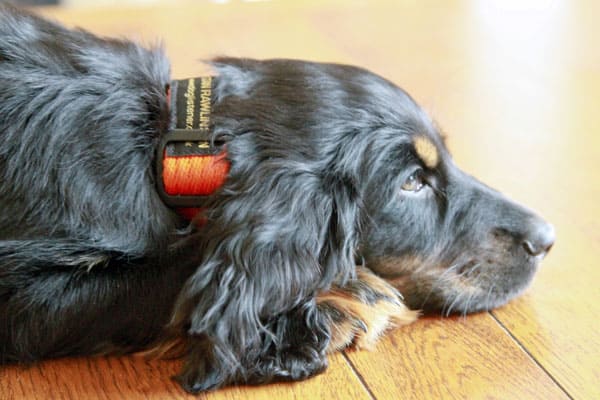
A Good Quality Lead and Collar: I manufacture my own collars and leads which are made of cushion web.
A beautiful soft feel fabric, that is kind on your hands and the dog’s neck. see (2) My Products. Which are made in Britain.
I have also designed a device called a Jingler. It works almost the opposite of a clicker which tells the dog when it has done something right.
The Jingler tells it when it has done something wrong. The repetition of the jingle and either a change of direction or a command conditions your dog so that it associates the noise with the command.
Though not necessary for crate training, it is extremely helpful for many other training situations, including walking to heel, nipping, jumping up, sit stay, recall and barking etc.
An Odour Eliminator: You can buy a commercial one or mix one part white vinegar with four parts water. Alternatively, I use biological washing liquid or powder which breaks down the fatty acids and proteins and removes the smell.
A quick wipe-over with surgical spirit afterwards finishes the job, this deters over-marking, they appear to dislike urinating over the surgical spirit.
Mothers keep babies in a playpen when the children can’t be fully supervised. Dogs are den animals, they will seek out a den to feel protected. It should be small and cosy, therefore, do not buy a crate that is too big for your dog.
The dog should be able to turn round comfortably. Dogs will rarely soil their own beds therefore if you fill the crate with something like Vet-Bed which can be washed regularly in the washing machine and dries very quickly.
You will find that toilet training should be quick, painless, and easy. Do not put newspaper in the crate this only serves to stimulate the puppy to toilet there. Put newspaper outside of the crate in the playpen on if the dog is in a utility room or kitchen.
Do not use puppy pads. They are impregnated with a chemical scent which normally smells of horses’ urine, this stimulates the puppies to over-mark them. Therefore it is training the puppy to mark indoors. Something I am sure you had not realised. It is also a good idea to cover the crate with a blanket, they also sell ready-made covers. This makes it more den-like and allows the puppy to relax more within the crate.
Please remember not to lock your puppy in overnight, until at the earliest 12 weeks of age. Puppies are unable to hold their bowels and bladder movements until this time. It will distress them terribly if they mess in their den and bed.
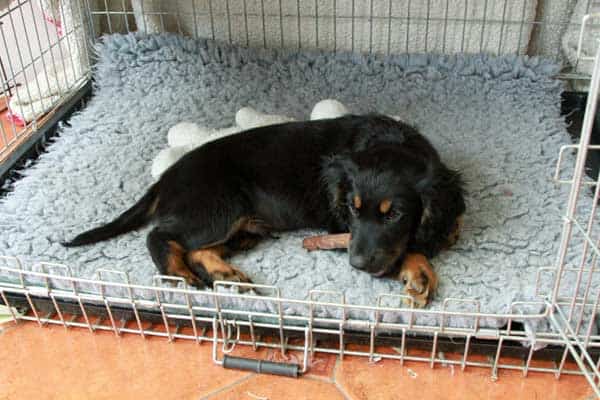
A playpen has the added benefit of controlling him when he is teething and learning toilet training. He could be teething up to a year old. To keep your possessions safe, and the pup away from harm such as electric cables or other dangerous objects. Then a Playpen with the crate inside is a must.
Your first rule on toilet training is when your puppy or untrained dog is not supervised, he or she should be in the crate.
By this, I am not suggesting that you lock your dog in a crate day in and day out or for long lengths of time. other than overnight.
You need to stage it depending on the dog’s age. but during the day work on no more than an hour at a stretch. Teach your dog to enter on command.
Begin by saying, “Kennel” or Bed” or any word you prefer. Place the dog in the crate, give a food reinforcement (a treat) and lock it. Wait 15 seconds and then release the dog and praise. The dog will start to associate the crate with the food and feel it is a good thing.
Never use the crate as punishment, If you want to have a naughty place for dogs then see my article called (3) The Alpha Myth near the end you will see the naughty step for dogs.
Build the dog up to an overnight stay. If the dog is noisy, tap on the top and say “Quiet”. Never let the dog out if he is noisy, you be reinforcing the crying behaviour, making it far harder to overcome the toileting problems.
Variable reinforcements work better than fixed ones. When you go out, leave the radio on, all talk show is preferable but classical music can also help. My favourite station is LBC 97.3, make sure it is in another room NOT the same room. Hearing voices or music will help your dog calm down, and not feel alone, therefore giving a sense of security.
| Is your dog pulling on the Lead, Unruly, Bad Recall, Aggressive on Lead, Jumping Up? See my article and Video Clips on how to stop this. The Jingler |
As mentioned above I sell treats for training and for long-lasting treats to help teething and teeth cleanliness It is believed that a dog is most upset during the first hour after an owner leaves. The Calves Hooves or Bulls Pizzle becomes the centre of the dog’s attention for an hour or so while he chews away on them.
This allows the owner to slip out without a fuss. When you return home, remove the Hoof or Pizzle from the dog’s crate, exchanging it for a Sprat or Beef jerky. After a week or so the dog will not worry about “Where’s my owner going?” but will think “Where’s my Chew?”
Establish Meal Periods: If you feed and water your dog on a schedule, your dog will eliminate on a schedule. FREE FEEDING YOUR DOG WILL MAKE THE JOB OF HOUSE TRAINING MUCH MORE DIFFICULT. First, establish meal periods. Under 12 weeks 4 meals a day after 12 weeks 3 meals until either 6 months or the puppy drops the middle feed whichever is the sooner, Single or double meals for adult dogs.
The meal period will last for 10 minutes. During that time give the required amount of food and as much water as the dog wants. At the end of the meal period, remove the food whether or not the dog has eaten unless instructed otherwise by your veterinarian. If the dog plays and does not eat, he will soon learn that the food will be taken away. This also helps to discourage picky eating habits.
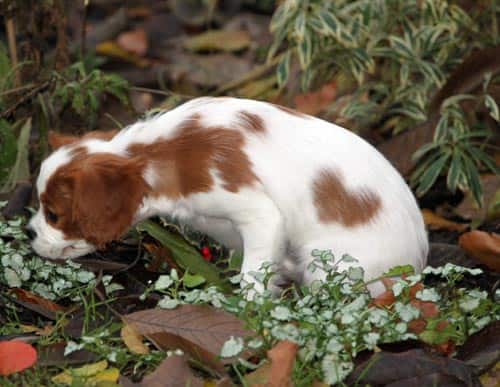
Place Your Dog On Commands: Many dog owners inadvertently teach their dogs to eliminate indoors.
Each time they take their dog outside they wait for him to eliminate. As soon as he does, they bring him in.
Most dogs, especially young ones, like the sights and smells of the outdoors. So they quickly learn that as soon as they eliminate, they are taken inside.
They learn to hold it until they come inside to prolong the experience.
It makes better sense to train your dog to eliminate on command, especially if you must. lead walk him. Take your dog to “his spot” each time.
As your dog begins to urinate, choose a word and say it over and over as the behaviour is occurring I say “wee wee”. Do this each time your dog urinates
Each time your dog finishes, praise him while offering a food reinforcement (a treat). When he has finished, take him for a walk as a reward! If your dog fails to eliminate in 5 minutes, take him inside, crate him for 15 minutes, and then try again.
The Instructive Reprimand: Each time you take your dog outside say, “Outside” or whatever word you want. Soon he will learn what outside means Then if the dog inappropriately urinates inside in your presence, say “Outside” and take him to “his spot”. “Outside” becomes an instructive command because it directs the dog to the appropriate elimination place and it is a reprimand because of the tone of voice you use as the Behaviour is occurring, thus acting as negative reinforcement.
There is a device called a pee pole which is a pheromone impregnated device that is supposed to aid toileting. I have had mixed responses to this aid, with some dogs it works well, particularly if you want them to go in a particular spot. With other dogs I find they pull them up and chew them, therefore, they are useless in that circumstance.
(2) My Products.
(3) The Alpha Myth
(4) The Dog Store
© Stan Rawlinson 2004
Recently updated 2022
Dog Behaviourist and Obedience Trainer
www.doglistener.co.uk
0208 977 3198
Updated Regularly last update 2022


